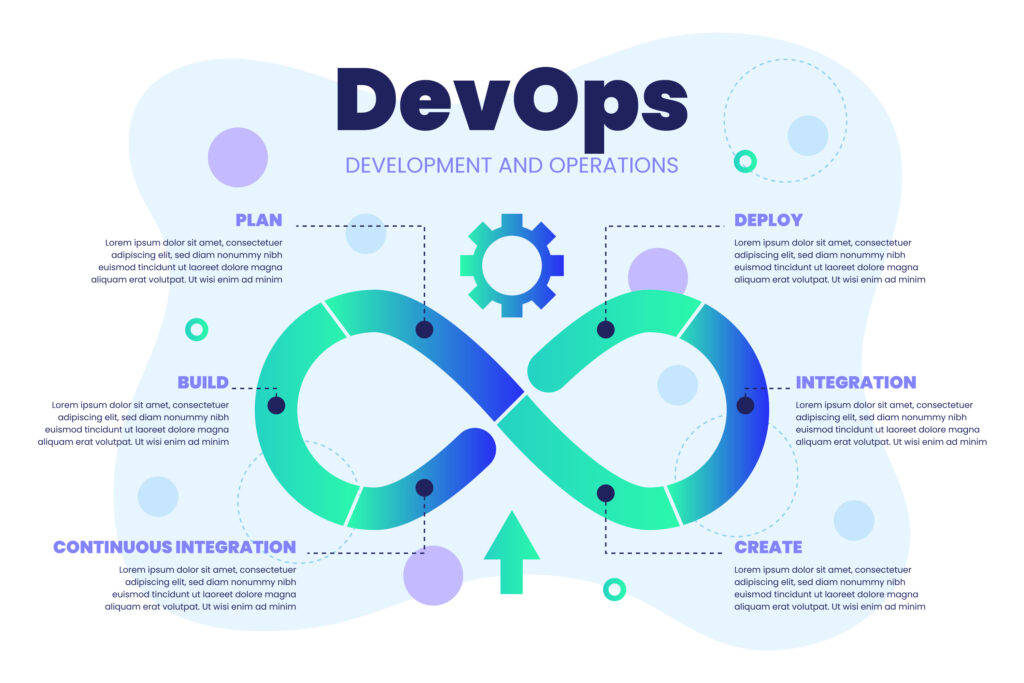In today’s fast-moving technology world, organizations cannot afford to spend months or even weeks rolling out new features. Customers expect updates, bug fixes, and innovations almost instantly. To achieve this, companies have adopted DevOps practices, and one of the most critical pillars of DevOps is Continuous Integration and Continuous Deployment (CI/CD).
Instead of waiting for a “big release day,” updates are pushed into production as soon as they are ready, ensuring rapid delivery while minimizing risks. This article explores the significance of CI/CD, how it works, its benefits, and the challenges involved.
What is CI/CD?
Continuous Integration (CI):
CI is the process where developers frequently merge their code into a shared repository, often several times a day. Each integration is automatically tested using unit tests, integration tests, and static code analysis. This ensures that errors are caught early, before they can affect the rest of the system.
Continuous Deployment (CD):
CD takes CI one step further. Once code passes all the automated checks, it is automatically released to production. This means the deployment pipeline is completely automated — from code commit to live production. In some cases, companies prefer Continuous Delivery instead of deployment, where code is always ready for release but requires manual approval before going live.
Together, CI and CD make sure that software is always in a deployable state.
How CI/CD Works
A CI/CD pipeline typically follows these steps:
Code Commit – Developers push their changes to the version control system (e.g., GitHub, GitLab, Bitbucket).
Build Stage – The application is compiled or built into executable code, along with any required dependencies.
Automated Testing – Unit, integration, and regression tests are run automatically to verify functionality.
Artifact Storage – The build outputs (artifacts) are stored in a repository such as Nexus, JFrog Artifactory, or AWS CodeArtifact.
Deployment to Staging – The code is deployed to a staging environment for further validation.
Production Deployment – Once approved (or automatically in full CD), the application is deployed to production with zero downtime using tools like Kubernetes, Jenkins, or GitHub Actions.
Benefits of CI/CD
Faster Time to Market
By automating testing and deployments, companies can release features weekly, daily, or even multiple times per day.
Improved Quality
Continuous testing ensures defects are caught early, reducing the likelihood of major production failures.
Reduced Deployment Risks
Since changes are smaller and more frequent, problems can be identified quickly and rolled back easily.
Increased Developer Productivity
Developers spend less time debugging release issues and more time building new features.
Better Collaboration
CI/CD encourages teams to work closely together, aligning developers, testers, and operations staff around shared goals.
Tools Supporting CI/CD
Several tools make implementing CI/CD pipelines easier:
Jenkins – Open-source automation server widely used for CI/CD pipelines.
CircleCI – A cloud-based CI/CD service with strong integration capabilities.
Azure DevOps – A Microsoft platform providing complete DevOps services.
AWS CodePipeline – Automates builds, tests, and deployments on AWS infrastructure.
Challenges in CI/CD
Complexity in Legacy Systems – Older applications may not be designed for automated deployments.
Cultural Shift – Teams must embrace frequent changes instead of relying on traditional long release cycles.
Security Concerns – Faster deployments can introduce vulnerabilities if security checks are not included in the pipeline.
Resource Costs – Running automated tests and cloud pipelines requires infrastructure investment.
Best Practices for CI/CD Success
Implement automated testing at every stage of the pipeline.
Use feature flags to roll out features gradually.
Monitor applications continuously with logging and observability tools.
Adopt Infrastructure as Code (IaC) with tools like Terraform or Ansible for consistent environments.
Prioritize security automation (DevSecOps) within CI/CD pipelines.
Conclusion
CI/CD is not just a technical practice; it is a cultural and operational shift that empowers teams to innovate quickly while maintaining high quality. By automating testing, integration, and deployment, organizations can deliver software at a pace that meets modern business demands. Although challenges exist, the benefits of CI/CD far outweigh the risks, making it a cornerstone of modern DevOps strategies.

